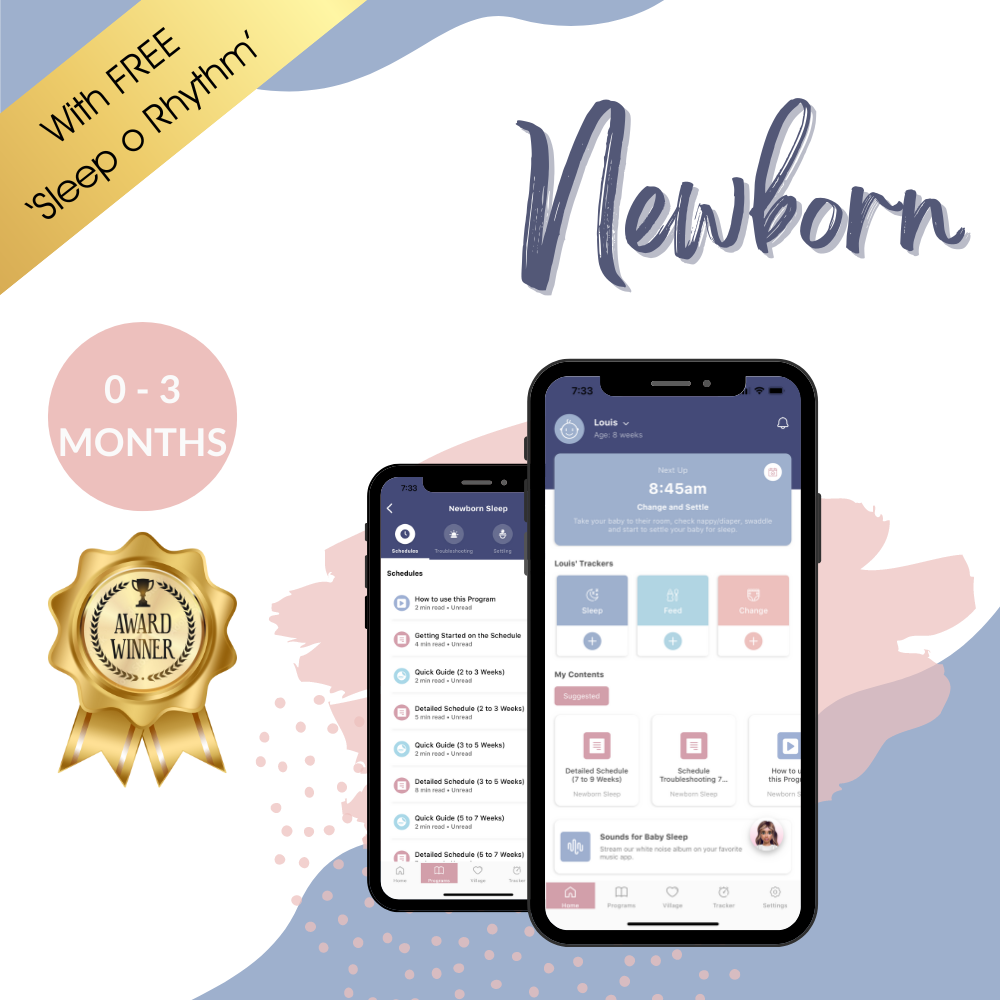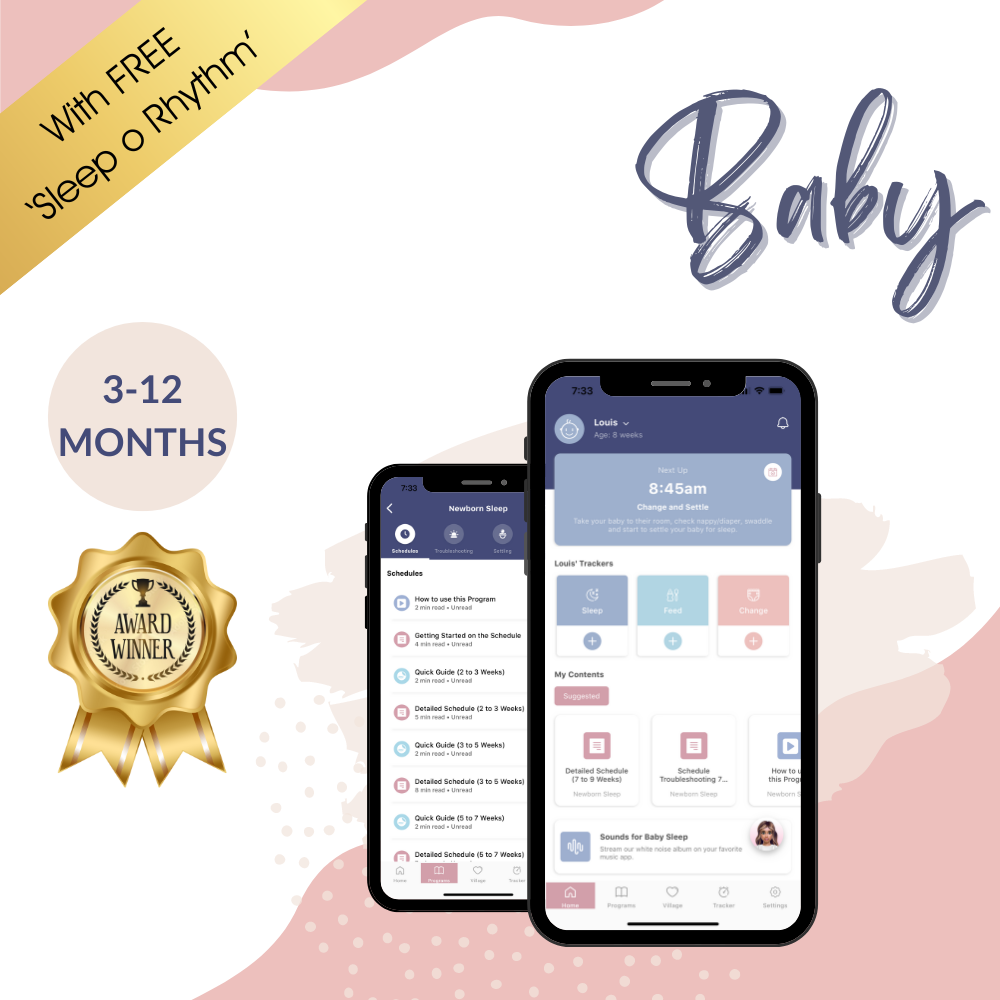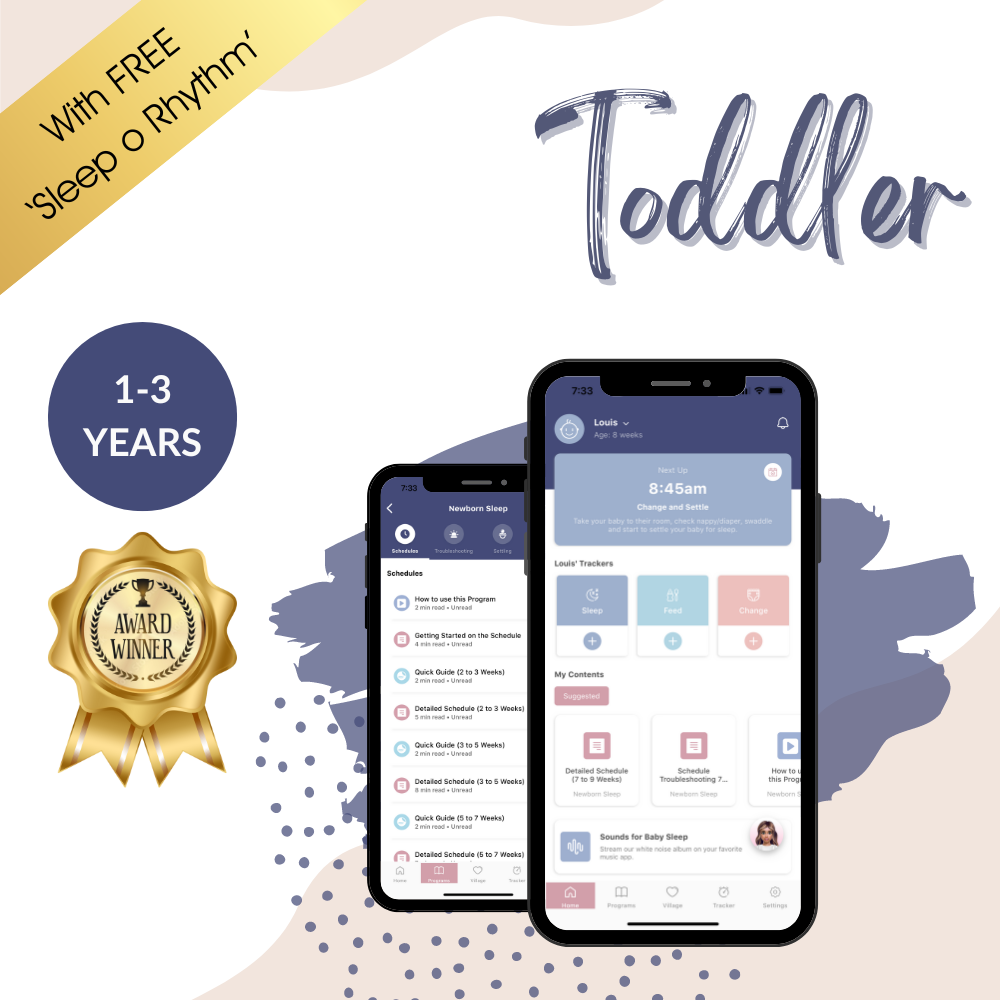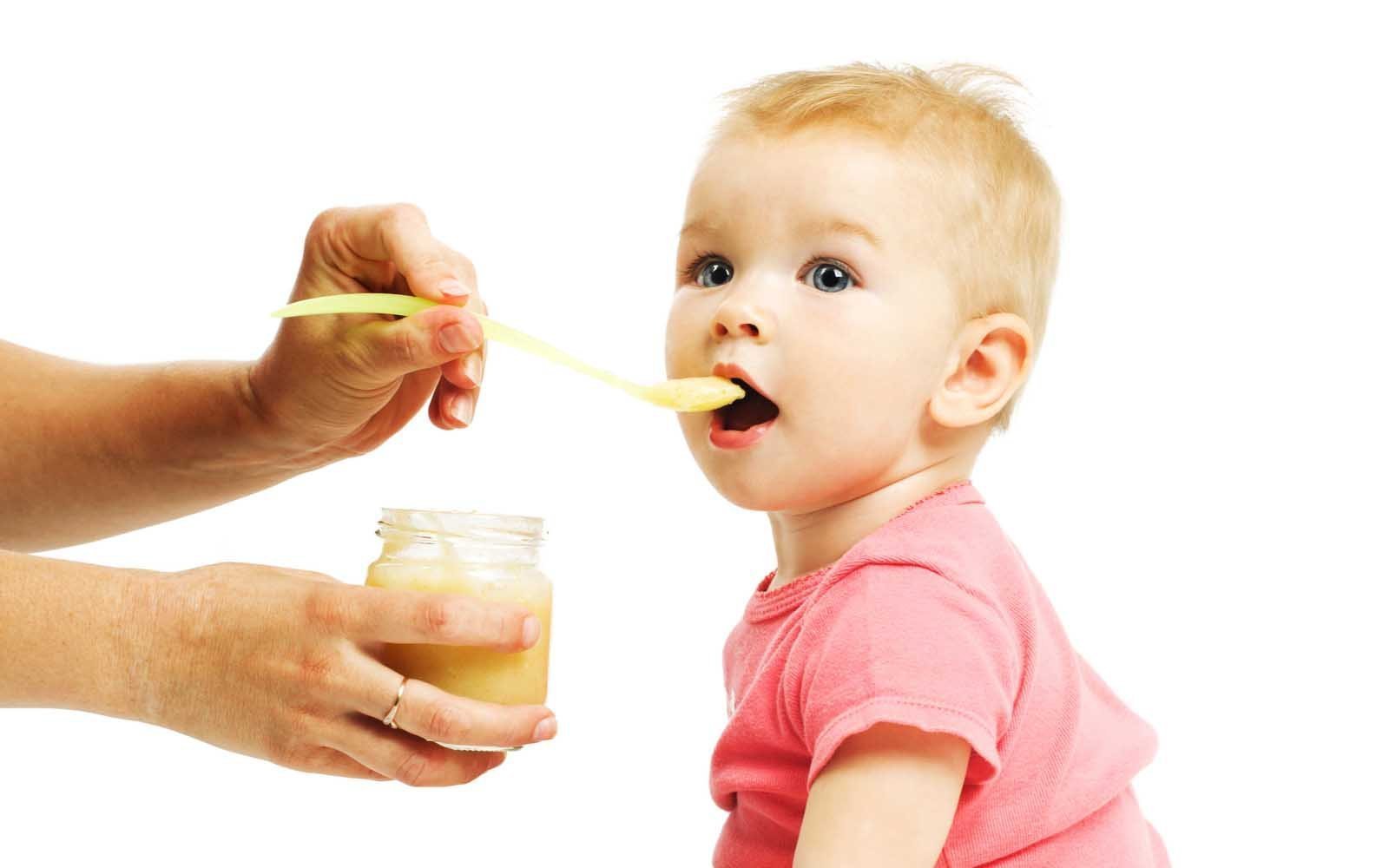
SOLIDS! The when, what, how of solid food.
Starting solids can feel really daunting for some parents. With conflicting information on the internet and then differing opinions from family and friends too, it can become very overwhelming!
Here at Little Ones we want to take the confusion out of starting solids and to help you to find what works best for you and your little one. So we've teamed up with an accredited dietitian and nutritionist to give you to the most current evidence-based nutrition recommendations for your baby.
In this article:
- When to start solids
- What foods to offer your baby
- How to introduce solid food
- How much should your baby be eating?
- How to introduce different textures
Get your little one’s sleep back on track.
Get guidance, advice & exclusive support through the sleep regressions, nap transitions and big sleep changes to come.
Get our Sleep Programs
Disclaimer: The advice and information provided in this article is general in nature and based primarily around the Australian guidelines so might not be appropriate for all circumstances. It is important to understand that the advice is intended as a guide only and is not intended to replace an individualized consultation with a medical doctor or qualified health professional.
When to start solids
The recommendations around when to start solids can differ from country to country but the general consensus (and recommendation from the World Health Organization) is to start introducing solids at around 6 months but not before 4 months.
At this time your little one will likely be starting to show some signs of readiness for solids.
Signs of readiness can include:
- Sitting upright on their own or with minimal support.
- Able control their neck and head well. This sign of readiness is very important as having good head and neck control is important to reduce the risk of choking.
- Interested in the people around them eating.
- Tries to grasp objects (like toys, food etc) and bring them to their mouth.
- Opens their mouth when they are offered food
- Brings the food from the front of their mouth to the back of their mouth and swallows, rather than letting it dribble back out of their mouth.
What foods to offer your baby
There are no set rules around what your baby's first food or first meal should be, but it's a good idea to choose foods from the following three groups:
- Iron-rich foods like meat, eggs, fish, nuts, seeds, green leafy vegetables, tofu or an iron-fortified infant cereal. Make sure all foods are given in a way that is texturally appropriate for your baby's age.
- Energy-dense foods like meat, eggs, oily fish, avocado, sweet potato, white potato, full-fat dairy products or banana. Little ones at this age are growing very quickly and won't eat very much to start with, as they have very small tummies. Energy-dense foods offer them bang for their buck in terms of energy per gram.
- A variety of vegetables or fruit. There is a critical window between 6 and 9 months for introducing the different textures and flavours of vegetables and fruit, so capitalize on this time where your little one will readily accept these foods by offering a wide variety.
Allergenic foods
Any food that contains protein has the potential to cause an allergic reaction, however, there are 9 foods that are most likely to elicit a reaction. These are:
- cow's milk (dairy)
- egg
- peanuts and tree nuts
- sesame
- soy
- fish and shellfish
- wheat
So the big question is, should you avoid foods that might cause an allergic reaction in your little one until after they are 12 months?
Say goodbye to sleepless nights.
Join over 800,000 families worldwide who are enjoying excellent sleep with our Sleep Programs, created by experts in the field of pediatric sleep.
Get our Sleep Programs
The answer is no. Research suggests that offering these common food allergens earlier, at around 6 months (and not before 4 months), can actually help to reduce your baby’s risk of developing food allergies.
Note: if someone in your little one’s immediate family (sibling or parent) has a food allergy, we would suggest speaking to your doctor to determine the best plan for introducing solids. Often, you will proceed with introducing solid food as usual but sometimes doctors will recommend introducing the common allergens earlier than 6 months, depending on the individual situation.
How to introduce solid food
Start low and slow! Begin with a small amount of food, around 1 teaspoon, so as not to overwhelm your little one for the first few mealtimes. Gradually increase this amount in response to your little one's hunger or fullness cues.
At Little Ones, we generally recommend starting solids at the lunch meal first and introducing one new food at a time. This makes it easier to see how your baby is responding to specific foods (and solids in general!) and gives them plenty of time to digest their food before bedtime. This can help to prevent your baby waking uncomfortable overnight.
Should you offer milk feeds or solids first?
Milk is still the priority nutrition until 12 months old, but solid food is an increasingly important part of the diet from 6 months old, as it provides nutrients that are important to meet the needs of the growing infant. From 6 months onwards, breast milk or formula alone does not provide all of the nutrients your baby needs - particularly iron.
It’s important to find the right balance between the two, where milk feeds are prioritised, but your little one is also eating solids.
At Little Ones, we generally recommend offering milk before solids until around 8 months of age. From 8 months onwards, your baby should be pretty well established on solids and starting to naturally reduce their milk feeds, so this is often a good time to start switching things around by offering solids before milk at some meals.
How much should your baby be eating?
There is no specific amount that a little one ‘should’ be eating. Just like adults, they will need different amounts depending on how they are feeling, the food itself, how much they have eaten earlier in the day, or how much milk they have consumed in the previous 48 hours.
A baby is considered "established" on solids when they are eating 2-3 meals a day, with approximately 1/2 cup of solid food at each meal. Most babies will reach this point by around 8 months old, but in some instances this can be earlier or later.
Let's get your little one's sleep sorted ASAP!Our award-winning Sleep Programs will solve your baby's sleep challenges in no time.
Get our Sleep Programs
What is most important is to try to tune into our little one’s individual hunger and fullness cues, so that we offer them exactly what they need at each meal.
Signs your little one might be hungry:
- Clenching fists over their chest
- Flexing their arms and/or legs
- Moving their hands to their mouth
- Putting things into their mouth
- Smacking or licking their lips
- Increased alertness
- Moving their head from side to side
- Leaning towards food or reaching towards food
- Motioning towards their high chair
- Opening their mouth wide
- Making sucking noises
Signs your little one might be full:
- They are putting their hand to their face
- They wait until the spoon is at their lips before opening their mouth
- They are grimacing, pouting or frowning
- They avert their gaze
- They turn their head away from food
- They spit or eject food from their mouth
- They are fussing or whining
- They are agitated or squirming
- They fidget or get distracted
- They close their mouth or turn their head away
How to introduce different textures
There is a lot of debate about whether to adopt a baby-led or traditional approach to weaning. The World Health Organization and many government recommendations are currently to offer a traditional weaning approach with the gradual introduction of new textures.
At the end of the day, what is most important is that your little one starts their solids journey within a positive eating environment, where you both feel comfortable. If you're not sure how you want to introduce different textures, we would recommend chatting to your doctor before your baby starts solids.
You may decide to follow a traditional weaning approach, starting with purees and progressing through the different textures to finger foods. Or you may want to take a baby-led weaning approach and start with finger foods, or even use a mixed approach. It's totally up to you!
Our Baby Sleep Program (3-12 months) helps take the guesswork out of starting solids, with personalised feeding and sleeping schedules, you'll know the optimum times for solids and milk to ensure your baby has the best chance for a good night's sleep!
*This blog is not intended to be used in place of medical advice by your healthcare professional. Please always seek medical advice if you are concerned about your baby's feeding.
_________
Bibliography
Australian Family Physician (2012). Feeding in the first year of life.
EFSA Panel on Dietetic Products, Nutrition and Allergies (NDA), Scientific Opinion on the appropriate age for introduction of complementary feeding of infants. EFSA Journal 2009; 7( 12): 1423 [38 pp.]. doi:10.2903/j.efsa.2009.1423.
Fleischer, D. M., Spergel, J. M., Assa’ad, A. H., & Pongracic, J. A. (2013). Primary Prevention of Allergic Disease Through Nutritional Interventions. The Journal of Allergy and Clinical Immunology: In Practice, 1(1), 29–36. https://doi.org/10.1016/j.jaip.2012.09.003
HealthEd (2021). Eating for Healthy Babies and Toddlers/Ngā kai tōtika mō te hunga kōhungahunga
World Health Organization (2021). Infant and young child feeding.
-------------
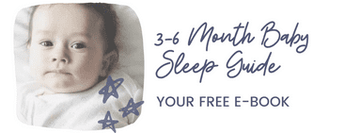
Receive product and services updates, promotional offers and other marketing communications based.


